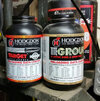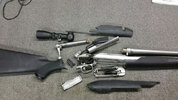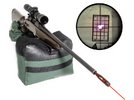On another thread about lasers for bore sighting https://www.thehighroad.org/index.p...optics-helps-are-absolutely-worthless.928103/ , a gentleman posted picture what happened when laser was left in a barrel and round fired. The result is rather frightening:


That reminded me of rifle burst test in Sweden when barrel was purposely plugged pushing a bullet from muzzle side, video https://www.youtube.com/watch?v=7Jlj-sC_elM .
See discussion here https://thefiringline.com/forums/showthread.php?t=382654 . Rifles were chambered in 308 Winchester and bullet was pushed from the muzzle about 4 cm (1.57") deep.
Somewhere else I found comment that rifles that fared well were manufactured using cold hammer forging method.
I have an old sporter based on M48 action (tad shorter version of M98), with bad barrel, and considering rebarreling it. Going to see local gunsmith soon and I am thinking of going with cold hammer forged barrel blank. In my hunting areas we have snowy and muddy terrains, and in case I "manage" to plug the barrel, I would rather have one that wouldn't burst. Yeah, I know about Alaska guides' practices of taping muzzles, but considering overall cost of re-barreling, bit more for cold hammer forged barrel blank shouldn't be an issue.
That reminded me of rifle burst test in Sweden when barrel was purposely plugged pushing a bullet from muzzle side, video https://www.youtube.com/watch?v=7Jlj-sC_elM .
See discussion here https://thefiringline.com/forums/showthread.php?t=382654 . Rifles were chambered in 308 Winchester and bullet was pushed from the muzzle about 4 cm (1.57") deep.
Somewhere else I found comment that rifles that fared well were manufactured using cold hammer forging method.
I have an old sporter based on M48 action (tad shorter version of M98), with bad barrel, and considering rebarreling it. Going to see local gunsmith soon and I am thinking of going with cold hammer forged barrel blank. In my hunting areas we have snowy and muddy terrains, and in case I "manage" to plug the barrel, I would rather have one that wouldn't burst. Yeah, I know about Alaska guides' practices of taping muzzles, but considering overall cost of re-barreling, bit more for cold hammer forged barrel blank shouldn't be an issue.
Last edited:








